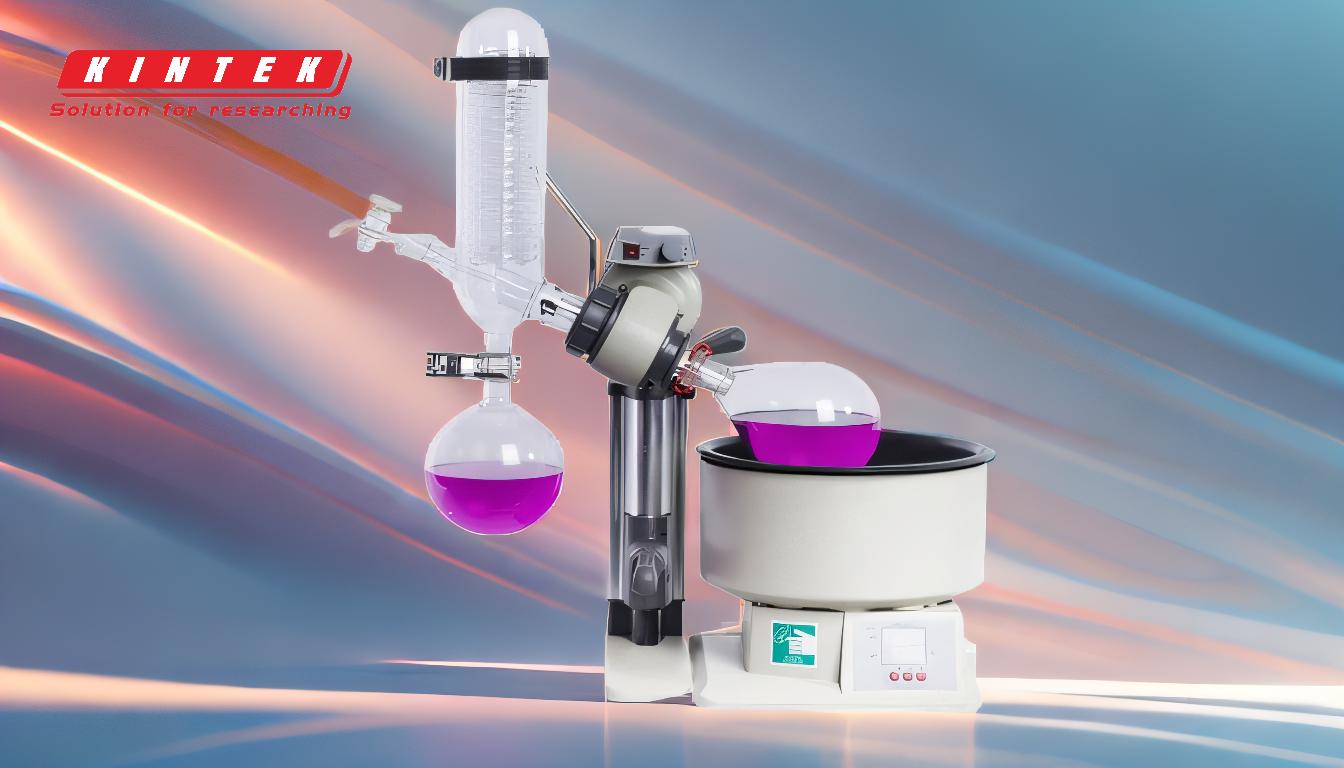A rotary evaporator (rotovap) may not be working due to several reasons, including issues with the vacuum system, evaporation process, or improper setup. Common problems include vacuum leaks, inefficient evaporation, foaming, bumping, and challenges with small samples or high boiling point solvents. To diagnose and resolve these issues, it is essential to inspect the vacuum pump, seals, and joints, optimize the evaporation conditions, and ensure proper handling of the sample. Addressing these factors can restore the functionality of the rotovap and improve its efficiency.
Key Points Explained:

-
Vacuum System Issues
- Compromised Vacuum Pump: If the vacuum pump is not functioning correctly, the rotovap will fail to maintain the necessary vacuum pressure. Check the pump for proper operation and ensure it is not clogged or damaged.
- Leaks in the System: Vacuum leaks can occur at joints, seals, or connections between the condenser and the body of the system. Inspect all seals and O-rings for wear or damage and replace them if necessary.
- Glassware Integrity: Cracks or imperfections in the glassware can also cause leaks. Ensure all glass components are intact and properly seated.
-
Evaporation Process Challenges
- Foaming: Foaming occurs when the sample's surface tension decreases, leading to excessive bubble formation. This can be mitigated by reducing the rotation speed, lowering the vacuum pressure, or adding anti-foaming agents if compatible with the sample.
- Bumping: Bumping is the sudden boiling of the solvent under vacuum, causing splattering or ejection of the sample. To prevent bumping, use a lower vacuum pressure, reduce the water bath temperature, or add boiling chips or anti-bumping granules to the flask.
- Slow Evaporation: High boiling point solvents or insufficient vacuum pressure can slow down the evaporation process. Optimize the vacuum level and increase the water bath temperature within safe limits to enhance evaporation rates.
-
Handling Small Samples
- Working with small sample volumes can lead to inefficiency, cross-contamination, or sample loss. Use appropriately sized flasks and ensure the sample volume is sufficient for the rotovap's design. For very small samples, consider alternative evaporation methods or specialized equipment.
-
Temperature and Condenser Overload
- Water Bath Temperature: Increasing the water bath temperature to speed up evaporation can overload the condenser, especially with volatile solvents like ethanol. Ensure the condenser has adequate cooling capacity to handle the vapor load.
- Thermal Decomposition: For heat-sensitive samples like cannabis extracts, use lower water bath temperatures and a chiller with sufficient cooling capacity to minimize thermal degradation.
-
General Maintenance and Best Practices
- Regularly inspect and maintain the rotovap, including cleaning the condenser, checking seals, and ensuring proper alignment of components.
- Follow the manufacturer's guidelines for operation and maintenance to prevent common issues and extend the equipment's lifespan.
- Keep a log of operating conditions and any issues encountered to identify patterns and optimize performance over time.
By systematically addressing these key points, you can diagnose and resolve the issues causing your rotovap to malfunction, ensuring reliable and efficient operation.
Summary Table:
| Issue | Cause | Solution |
|---|---|---|
| Vacuum System Issues | Compromised vacuum pump, leaks, or cracked glassware | Inspect and replace seals, check pump functionality, and ensure glassware integrity. |
| Evaporation Challenges | Foaming, bumping, or slow evaporation | Adjust rotation speed, vacuum pressure, or add anti-foaming/anti-bumping agents. |
| Small Samples | Inefficiency or sample loss | Use appropriately sized flasks or consider alternative methods for small volumes. |
| Temperature Overload | Overloaded condenser or thermal decomposition | Lower water bath temperature and ensure adequate condenser cooling capacity. |
| General Maintenance | Poor maintenance or improper setup | Regularly clean and inspect components, follow manufacturer guidelines, and log operations. |
Struggling with your rotary evaporator? Contact our experts today for personalized troubleshooting and solutions!














